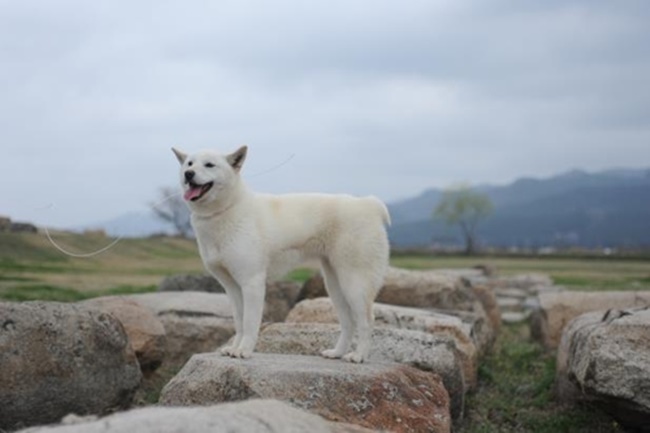
Findings released on Tuesday from research into the lack of a tail among some Donggyeongi dogs showed that similar to the Australian Shepherd and Jack Russell Terrier, Donggyeongis tend to have either a short tail or none in some cases for genetic reasons, making them the only rare Korean dog breed with the physical trait of having little to no tail. (Image: Rural Development Administration)
SEOUL, Oct. 18 (Korea Bizwire) – A new research has found some Donggyeongis, which are a natural monument as well as a rare Korean dog breed, are born without a tail due to genetic differences.
Findings released on Tuesday from research into the lack of a tail among some Donggyeongi dogs showed that similar to the Australian Shepherd and Jack Russell Terrier, Donggyeongis tend to have either a short tail or none in some cases for genetic reasons, making them the only rare Korean dog breed with the physical trait of having little to no tail.
The research was conducted by a team led by professor Kim Hee-bal at Seoul National University in collaboration with the Rural Development Administration in order to look into the cause of the physical differences found among Donggyeongis.
During the research, the team compared a number of Donggyeongis with different types of tail bone structure, which were then divided into groups.
Researchers found that SFRP2 and CpG islands, which are found in the so-called ‘T gene’, both relate to the lack of tails among Donggyeongis, as well as ANKRD11 and ACVR2B, which can have an impact on the length of a tail.
The Donggyeongi, which is also known as the ‘Gyeongju dog’, a name earned for having often been spotted around Gyeongju in the past, is one of the traditional Korean dog breeds with the longest history, dating all the way back to the Three Kingdoms of Korea, as backed by mentions in old literature including Samguk Sagi, which is thought to have been written around the 12th century.
After becoming an official natural monument in 2012, around 460 dogs are now being protected and raised at a breeding farm at Sorabol College and Yangdong Village, including some 100 dogs owned by the Korean Gyeongju Donggyeong Dog Association.
The Rural Development Administration says the research not only successfully managed to determine the reasons behind the short tail of Donggyeongis, but also made contributions to better understanding the genetics of other Korean dog breeds.
Choi Bong-hwan, an official responsible for animal genome databases, says efforts to preserve and analyze traditional Korean dog breeds will continue.
Findings from the research were published in the international academic journal Scientific Reports, which is a sister publication of Nature.
Ashley Song (ashley@koreabizwire.com)







Thanks for posting this info. I just want to let you know that I just check out your site and I find it very interesting and informative. I can’t wait to read lots of your posts. blog here
A dog without a tail? Wow, this is certainly rare! I personally like tails – no matter how stubborn they are. A dog without a tail is simply not complete. Although by the looks of the picture, they have a small tail, almost minuscule in nature.